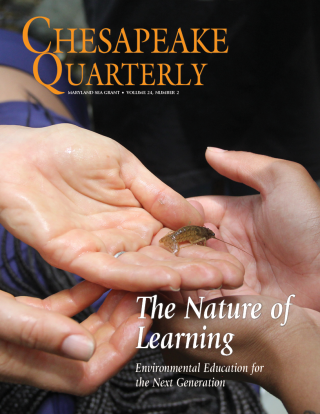Is this true for all wetlands?
Extension
The students will now take the knowledge they acquired during the Exploration and Explanation phases of the lesson and apply them to other geographic locations. During the first part of the Extension, the students will compare tidal data from Dyke Marsh (or another tidal freshwater marsh) to tidal data from a point closer to the mouth of the Chesapeake Bay (or other location).
The students should realize that the tidal range is not the same at the two locations and is greater at the location closer to the ocean. The students will be given the opportunity to compare a tidal freshwater marsh to a wetland that is not affected by tides—a peatland. The students will see that although peatlands are not affected by tides, they still have plant community stratification due to inundation levels. In peatlands, this stratification is due only to elevation differences. A slight elevation change can completely alter the plant communities in the area.
Objectives
Using tidal data, students will compare the tidal range of two geographic locations. Students will compare a tidal freshwater marsh and a peatland in regard to how hydrology affects the distribution of plant communities in the two wetlands.
Lesson Materials
Tidal data from Dyke Marsh or other freshwater tidal marsh and one other location in the Chesapeake Bay or an area close to the tidal freshwater marsh (preferably closer to the ocean)
Graph paper
Colored pencils
Internet access or copies of articles from “Introduction to Peatlands” website
Copies of Venn diagram worksheets
Procedures
1. Give each student tidal data for Dyke Marsh (or another freshwater tidal marsh)and another location in the Chesapeake Bay. Real-time tidal data can be found on the NOAA website, http://tidesonline.nos.noaa.gov.
2. Have the students create line graphs of the data. The students should put both sets of data on the same graph in order to easily make comparisons. These graphs can be created by hand or using computer graphing software.
3. Have the students answer questions related to comparing the two lines on their graphs. Pose the following question to the students: “Can you think of an area close to your home where the plant communities would be greatly affected by varying water levels near the surface of the soil?”
4. Through a guided discussion, help the students realize that the bogs and fens within their home county are also wetlands that have stratified plant communities due to the varying levels of inundation. (If there are no peatlands located close to where your students live, steps 3 and 4 should be modified accordingly.)
5. Have the students explore the “Introduction to Peatlands” website at, http://umaine.edu/search/?q=peatlands
6. Discuss the similarities and differences between a tidal freshwater marsh and a peatland. Have the students complete a Venn diagram that compares a tidal freshwater marsh to a peatland.
References
National Oceanic and Atmospheric Administration Tides Online, http://tidesonline.nos.noaa.gov/
Wetland Connections Introduction to Peatlands, http://umaine.edu/search/?q=peatlands



